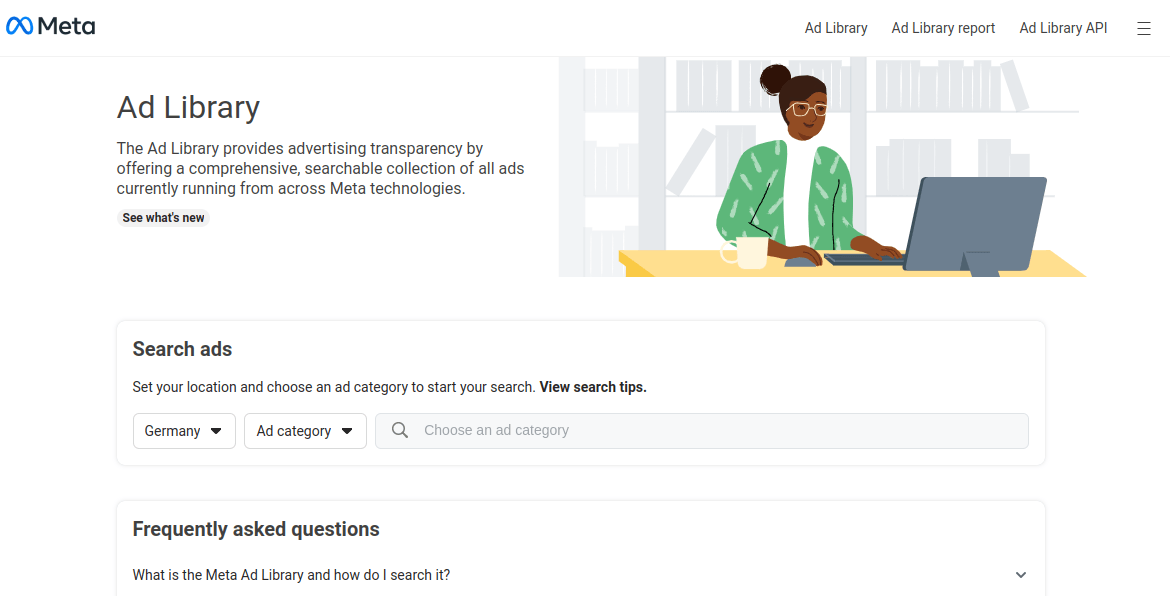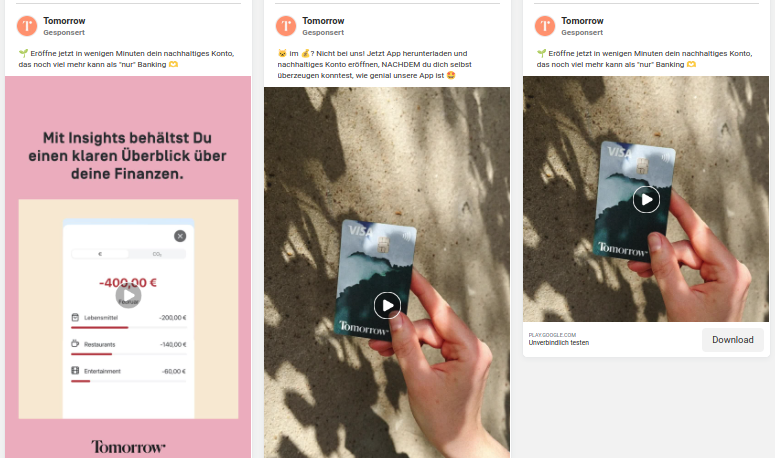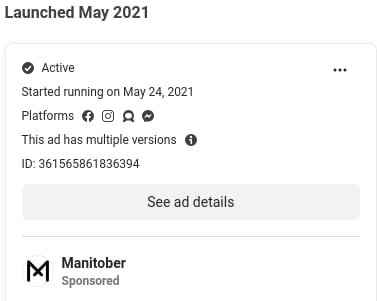Navigating Marketing Strategies During a Crisis
The financial crisis in 2009, the coronavirus pandemic in 2020-2022, the energy crisis in 2022 -...
By: Johannes Fiegenbaum on 4/30/24 11:24 AM

Following the events surrounding the election of Donald Trump as President of the USA and the alleged contribution of Cambridge Analytica, Meta introduced the Ad Library for all ad types in 2019. Previously, it was only available for political ads in the USA.
You can now use it to view the following:
Apart from any political motivation, there are other good reasons for advertisers on Facebook and Instagram to take a closer look at the Meta Ad Library. This is because the Ad Library allows you to see what the competition is advertising and in what form. You can learn a lot from this. It is also possible to deduce the quality with which the competition implements Meta ads operationally.

Before we dive into more technical parameters, it is worth analyzing the following points.
What forms and patterns do other advertisers use in their Facebook and Instagram ads? How do they use their brand logo? What part do product and brand communication play? How are product and brand linked? You can find more background information on brand advertising in this article: Branding and Brand Building for Start-ups.
Pay attention to the formats of the ads displayed. Is the focus on link ads or video ads? Are the campaigns with link ads, lead ads, carousel ads more conversion-oriented or brand-oriented with videos in portrait format?
How does the competition deal with Black Friday, Christmas, and other seasonal events, and what communication is used? Discounts or business as usual? Is there an advertising push after Christmas, in the fifth season? That would be smart, as right after Christmas, CPMs on all social advertising platforms are cheaper than ever.
Are there any surprises? In form and content. Where do you get stuck, and what attracts attention? It is also worth looking at advertisers who are known to be very good at the Meta platforms. What can you learn from them?
Which tests are carried out? Which parameters are tested? You can also learn from this. Good advertisers carry out A/B tests when they hope to make a real difference. These insights can also be used for your own ads. Often, the current A/B test is also the result of many previous tests, so you can cleverly use this to your advantage.
Which text entry does the competition choose? What advantage of their offer are they focusing on? Is there an insight behind it that you haven't yet thought of yourself? An interesting twist, a good choice of words? Many small things can make the difference and distinguish the good social advertisers from the rest.
Now let's move on to the more technical parameters. Let's take the following Meta Ad Library entry apart as an example:

In this case, quite a while ago. The ad was and is either very successful, or the company has limited creation capacity and needs to advertise over a longer period of time with the same advertising media. Additionally, it may not be able to adequately monitor the success of its own advertising media. After all, it is not to be expected that an ad will run successfully for such a long time.
In this case, on all of them: Facebook, Instagram, Audience Network, and Messenger. If all platforms are selected for an ad, the risk of ad failure is spread across several placements and is lower overall.
Or to put it another way: If the ad only runs on Facebook and it doesn't work on Facebook, then it doesn’t work at all. However, if it also runs on Instagram and Messenger, there is a chance that it will achieve better results on one of the other two platforms. Good social advertisers know this. You could also call this the only "free lunch" of the Meta ad platform, borrowing a term from investment banking.
In a bad case, companies test the individual platforms against each other and burn time and money on insights that are not there.
The selection of all advertising platforms also reduces costs because it increases reach. Perhaps only 80% of a target group can be reached on Facebook. If I also select Instagram, the Audience Network, and Messenger, I achieve a higher target group utilization, a higher reach, and therefore lower costs, i.e., CPMs.
This is exactly what Meta is focusing on with its new automation offering Advantage+. Giving machine learning as much leeway as possible to achieve the most cost-efficient results instead of driving up costs through artificial scarcity.
One exception is special Instagram ad formats that cannot be combined with ads on Facebook.
This is not switched on by mistake. You can create up to 5 headlines, signatures, and titles for each ad in Meta. The system then automatically optimizes for the most successful combination. With Advantage+, Meta takes this even further and also includes product catalogs and other creative elements.
This is often a psychological marker. Is an advertiser ready to hand over responsibility to Facebook's machine learning? Meta Ads Machine Learning optimizes faster and better than any human—provided you set the targets correctly.
This allows technically savvy users to read out how an advertiser structures its campaigns and channels. Does Meta run under PPC click? Or is it a separate channel in the Google Analytics hierarchy?
Another tip is the Chrome extension Ad Finger & Ad Spy. Ad Library Helper displays ad examples quickly and easily. 10 related pages can be compared with just one search, all directly from the browser.
I have summarized further advertising tools in this article: The Best Marketing Tools for Startups.
The Ad Library can be found under the following link: Meta Ad Library

ESG & sustainability consultant specializing in CSRD, VSME, and climate risk analysis. 300+ projects for companies like Commerzbank, UBS, and Allianz.
More aboutThe financial crisis in 2009, the coronavirus pandemic in 2020-2022, the energy crisis in 2022 -...
LinkedIn Ads do not work.
As a startup, it is important to have a successful marketing approach right from the start so that...